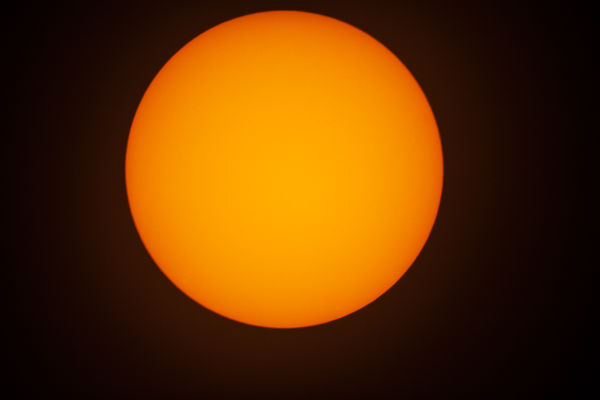solar photography settings?
May 3, 2020 14:36:20 #
Now that my Celestron Nexstar SCT8 is working properly I set it up on the back deck for a few test shots. The night sky was no problem but this afternoon I slapped the solar filter on and did some viewing and then decided I should take some photos with the dslr. My first 3 shots (damn focusing is touchy) ISO 100 SS 250 turned out OK but the histogram is crammed to the left. Tried a few more at SS 125 and they turned out brighter and I can see the center is brighter than the extremities. My question, what do you solar photographers use for settings and am I on or close to the right track? Second question, is it normal to stack solar images like astro or is it more of a one shot will do the trick? and if stacked what program will handle this? Tried Deep Sky Stacker but after almost 45 minutes it only accepted one frame. Attached is 1 frame at 125 SS. No flares or coronal disturbances that I can see.
May 4, 2020 18:38:34 #
Ballard
Loc: Grass Valley, California
I don't think Deep Sky Stacker is the best tool for stacking planets, lunar or solar images since it uses stars in the image to align the frames (maybe it has some settings that allow it to stack these other types but I haven't found them). In any case I normally will take 4K video of these objects pull out the frames and stack them with either RegiStax6 or Autostakket3 (64 bit version) both of which are free. For exposure I just take a couple of try's at different settings and see what looks best (your image looks like you got the exposure set well). There are a few cases where I might take individual pictures when there is movement or rapid changes (e.g. birds flying by or just before totality in a solar eclipse). The links below show some examples of stacked and some single picture examples. The sun is very quite right now.
Mercury transit
https://www.uglyhedgehog.com/t-618831-1.html
Solar Eclipse
https://www.uglyhedgehog.com/t-615123-1.html
Saturn
https://www.uglyhedgehog.com/t-600633-1.html
Jupiter
https://www.uglyhedgehog.com/t-600510-1.html
Mercury transit
https://www.uglyhedgehog.com/t-618831-1.html
Solar Eclipse
https://www.uglyhedgehog.com/t-615123-1.html
Saturn
https://www.uglyhedgehog.com/t-600633-1.html
Jupiter
https://www.uglyhedgehog.com/t-600510-1.html
May 4, 2020 20:33:36 #
Much appreciated Ballard. Downloaded both those programs and will try them out. Looks like neither one accepts CR2 RAW files.
May 5, 2020 01:30:58 #
Ballard
Loc: Grass Valley, California
big-guy wrote:
Much appreciated Ballard. Downloaded both those programs and will try them out. Looks like neither one accepts CR2 RAW files.
Hi Big-Guy
That is true however you can easily batch convert the CR2 files to jpeg or16 bit tiff for full resolution with the canon Digital Photo Professional software that comes with Canon camera that I assume you have since CR2 is Canon Raw Version 2 format. The only caveat with Tiff is that a lot of images will eat a lot of memory and Registax6 is a 32 bit program that will run out at 4Gig. Autostakket3 has a 64 bit version so if you have enough RAM it will use it. The other day I used ~1000 tiff files for a lunar shot and Autostakket used ~30gig of RAM (I Created the tiff's by converting the canon .mov file to tiff files with the canon EOS movie utility).
Below is the shot using these files.
https://www.uglyhedgehog.com/t-644543-1.html
You can also create the Tiff's with PIPP (Planetary Imaging PreProcessor) since it knows the .mov (and other formats). It also has some neat features to pre-register and do some processing on the files that make the stacking go faster. I just started to play with PIPP so I'm not real familiar with all it features yet.
If you want to reply, then register here. Registration is free and your account is created instantly, so you can post right away.

